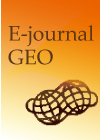Volume 7, Issue 2
Displaying 1-18 of 18 articles from this issue
- |<
- <
- 1
- >
- >|
Reports
-
Article type: Report
2012 Volume 7 Issue 2 Pages 117-130
Published: September 28, 2012
Released on J-STAGE: September 28, 2012
Download PDF (9067K) -
Placing Imported Chinese Products in the Kiso Lacquerware Region: Reconstructing “Traditional Japan”Article type: Report
2012 Volume 7 Issue 2 Pages 131-146
Published: September 28, 2012
Released on J-STAGE: September 28, 2012
Download PDF (1048K) -
Article type: Report
2012 Volume 7 Issue 2 Pages 147-157
Published: September 28, 2012
Released on J-STAGE: September 28, 2012
Download PDF (2497K) -
Article type: Report
2012 Volume 7 Issue 2 Pages 158-177
Published: September 28, 2012
Released on J-STAGE: September 28, 2012
Download PDF (1706K) -
Article type: Report
2012 Volume 7 Issue 2 Pages 178-196
Published: December 31, 2012
Released on J-STAGE: January 31, 2013
Download PDF (3614K) -
Article type: Report
2012 Volume 7 Issue 2 Pages 197-213
Published: December 31, 2012
Released on J-STAGE: January 31, 2013
Download PDF (7772K)
Commentary Articles
-
Article type: Commentary Articles
2012 Volume 7 Issue 2 Pages 214-224
Published: December 31, 2012
Released on J-STAGE: January 31, 2013
Download PDF (8144K) -
Article type: Commentary Articles
2012 Volume 7 Issue 2 Pages 225-249
Published: December 31, 2012
Released on J-STAGE: January 31, 2013
Download PDF (840K)
Symposium Articles on the Academic Meeting of the Association of Japanese Geographers, Spring 2012
-
Article type: Symposium Articles on the Academic Meeting of the Association of Japanese Geographers, Spring 2012
2012 Volume 7 Issue 2 Pages 250-258
Published: December 31, 2012
Released on J-STAGE: January 31, 2013
Download PDF (4750K) -
Article type: Symposium Articles on the Academic Meeting of the Association of Japanese Geographers, Spring 2012
2012 Volume 7 Issue 2 Pages 259-267
Published: December 31, 2012
Released on J-STAGE: January 31, 2013
Download PDF (573K)
Symposium Articles on the Academic Meeting of the Association of Japanese Geographers, Autumn 2012
-
Article type: Symposium Articles on the Academic Meeting of the Association of Japanese Geographers, Autumn 2012
2012 Volume 7 Issue 2 Pages 268-274
Published: December 31, 2012
Released on J-STAGE: January 31, 2013
Download PDF (5200K) -
Article type: Symposium Articles on the Academic Meeting of the Association of Japanese Geographers, Autumn 2012
2012 Volume 7 Issue 2 Pages 275-
Published: December 31, 2012
Released on J-STAGE: January 31, 2013
Download PDF (224K) -
Article type: Symposium Articles on the Academic Meeting of the Association of Japanese Geographers, Autumn 2012
2012 Volume 7 Issue 2 Pages 276-280
Published: December 31, 2012
Released on J-STAGE: January 31, 2013
Download PDF (2108K) -
Article type: Symposium Articles on the Academic Meeting of the Association of Japanese Geographers, Autumn 2012
2012 Volume 7 Issue 2 Pages 281-283
Published: December 31, 2012
Released on J-STAGE: January 31, 2013
Download PDF (350K) -
Article type: Symposium Articles on the Academic Meeting of the Association of Japanese Geographers, Autumn 2012
2012 Volume 7 Issue 2 Pages 284-292
Published: December 31, 2012
Released on J-STAGE: January 31, 2013
Download PDF (3457K) -
Article type: Symposium Articles on the Academic Meeting of the Association of Japanese Geographers, Autumn 2012
2012 Volume 7 Issue 2 Pages 293-295
Published: December 31, 2012
Released on J-STAGE: January 31, 2013
Download PDF (376K) -
Article type: Symposium Articles on the Academic Meeting of the Association of Japanese Geographers, Autumn 2012
2012 Volume 7 Issue 2 Pages 296-306
Published: December 31, 2012
Released on J-STAGE: January 31, 2013
Download PDF (584K)
Symposium Articles on the Academic Meeting of the Association of Japanese Geographers, Spring 2012
-
Article type: Symposium Articles on the Academic Meeting of the Association of Japanese Geographers, Spring 2012
2012 Volume 7 Issue 2 Pages 307-320
Published: December 31, 2012
Released on J-STAGE: March 15, 2013
Download PDF (2487K)
- |<
- <
- 1
- >
- >|
